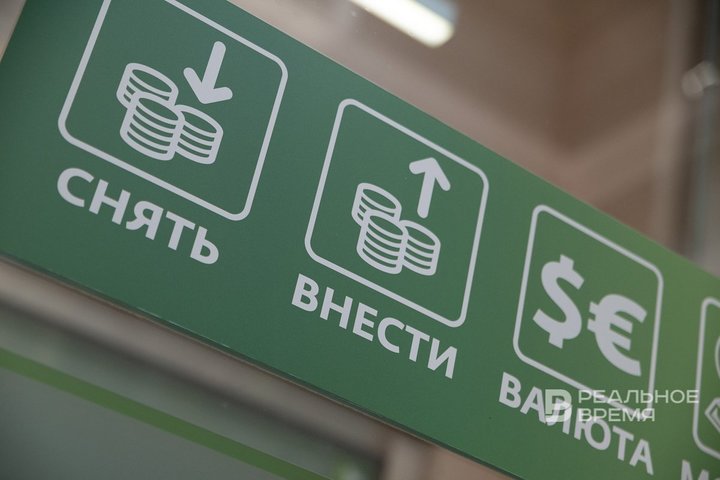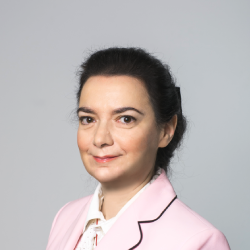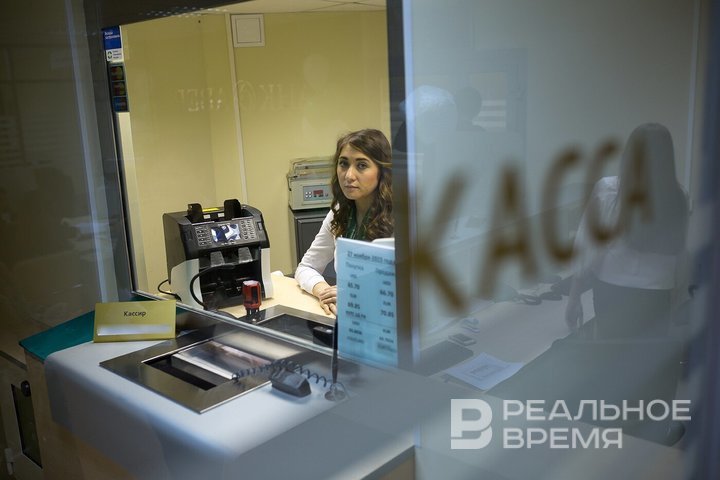A trillion at interest: how Tatarstan citizens save up
Over the year, residents of the republic increased their deposits by 190 billion rubles, but the lion's share of the increase is the capitalisation of interest

Tatarstan residents have accumulated 1 trillion rubles on deposits. Over the year, the amount has increased by 23%, or 190 billion rubles. The peak of growth occurred in June, then the savings activity of the population began to decline. Today, the republic is far from being among the leaders in Russia in terms of the increase in bank deposits of individuals. On average, bank deposits in the country increased by 25.6%. Deposits grew the most in Sevastopol, Crimea and the Belogorod region in the first half of 2024. However, the Bank of Russia assesses the savings activity of Russians as insufficient and does not rule out further rate increases.
Plus 190 billion rubles in piggy banks
The volume of deposits of the population in accounts in banks of Tatarstan (excluding escrow accounts) exceeded 1 trillion rubles in the first half of 2024. Over the year, this amount, as of July 1, increased by 23%, or 190 billion rubles, the press service of the National Bank of Tatarstan told Realnoe Vremya.
As of July 1, 2024, the amount of funds in the accounts of individual entrepreneurs in banks in Tatarstan exceeded 46 billion rubles, an increase of 36% compared to the same date in 2023. At the same time, the volume of funds on deposits of legal entities increased by only 1.4% over the year and reached 695 billion rubles on July 1, 2024.

Meanwhile, in the second quarter of 2024, the Bank of Russia did not see an increase in savings activity in the country, according to the regulator's website. As the Central Bank notes, the level of interest rates turned out to be insufficient to further increase the attractiveness of savings. In addition, many households whose incomes have increased over the past few years have a lower propensity to save. To finance investments, the country needs a higher savings rate.
“In order to return the economy to a balanced growth trajectory and inflation to the target, the level of real interest rates in the economy should be higher," the Bank of Russia concluded.
Savings activity in Tatarstan is very modest
“In Tatarstan, as of July 1, the annual growth of deposits amounted to 23% (in absolute terms, the growth amounted to 190.5 billion rubles) — this is slightly less than the national average, where deposits increased by 25.6%," commented Maxim Osadchy, the head of the analytical department of BKF Bank.

“It is worth noting that in Tatarstan, the maximum annual growth in deposits occurred on June 1 — 24.8% (in absolute terms, the growth amounted to 199.5 billion rubles). In June, the growth rate of deposits decreased slightly, in particular due to the sanctions imposed on 12 June. The population could become more active in buying investment goods and reduce savings activity," suggests Maxim Osadchy.
At the same time, about half of the increase in deposits was provided by capitalisation of interest, the expert emphasises: “Excluding accumulated interest, the annual growth amounted to about 100 billion rubles. The total income of the population of the republic is about 2 trillion rubles per year. One hundred billion rubles of the inflow of funds from the population into deposits is only 5% of the income of the population for the year, which indicates a very weak level of savings activity of the population.”

Therefore, we see some skepticism on the part of the Central Bank regarding the savings activity of the population, which remains low despite a large increase in interest rates, he notes.
It is possible that the main driver of deposit growth today is payments under contracts to the SVO fighters.
“Recipients of social benefits are primarily poor segments of the population, which are characterised not by a savings, but by a consumer model of behaviour. Therefore, in general, we see from statistics that savings activity in Russia is low today, even with the current high level of deposit rates," the expert concluded.
Rates may get higher

The Central Bank's release also states that “the Bank of Russia will assess the feasibility of further raising the key rate at the next meetings," and Elvira Nabiullina noted that the Central Bank's forecast does not imply a rate cut until the end of the year.
Nevertheless, Belenkaya believes that the Central Bank will keep the key rate at the current level until the end of the year, and next year it will move to reduce it. “However, given the Central Bank's tough attitude to quickly return inflation to the target in the face of pro-inflationary structural changes in the economy, the risks of tougher scenarios still remain," the expert warns.
“Real inflation” is estimated at 25%

Nevertheless, according to the analyst, in the current conditions, a bank deposit is very interesting as a savings tool, especially if you take into account the shortage of alternative options in terms of risk/return ratio.
“The advantage of a bank deposit is its simplicity and clarity. To use it, one does not need to have knowledge and skills of working on the stock market, besides, funds in the amount of up to 1.4 million rubles are insured by the state. So, in my opinion, a bank deposit will remain the most suitable option for saving money for the vast majority of Russians," Igor Dodonov believes.

“In addition, the overall growth of real disposable incomes of Russian citizens also plays a role, they have more free funds that can be deposited in the bank," the expert adds. “It should also be noted that due to the expiration of the state program of preferential mortgages and the tightening of family mortgage conditions, many Russians will probably decide to postpone the improvement of housing conditions. At the same time, some of the funds they have accumulated for the first mortgage payment may also go to a bank deposit.”
Dodonov believes that against the background of high deposit rates, which increased further in the run-up to and after the July meeting of the Central Bank, in the second half of the year, the active inflow of money from Russian citizens to banks will continue, and by the end of 2024, the volume of funds of individuals in banks are going to grow by 24-25%.
The director of the group of ratings of financial institutions of the NCR Agency, Egor Lopatin, adheres to the same forecast.

In case of further tightening of monetary conditions, an increase in the profitability of deposits is also likely. By the end of the year, the amount of people's funds can grow by more than 25% compared to last year, including due to the capitalisation of interest, the expert summarises.